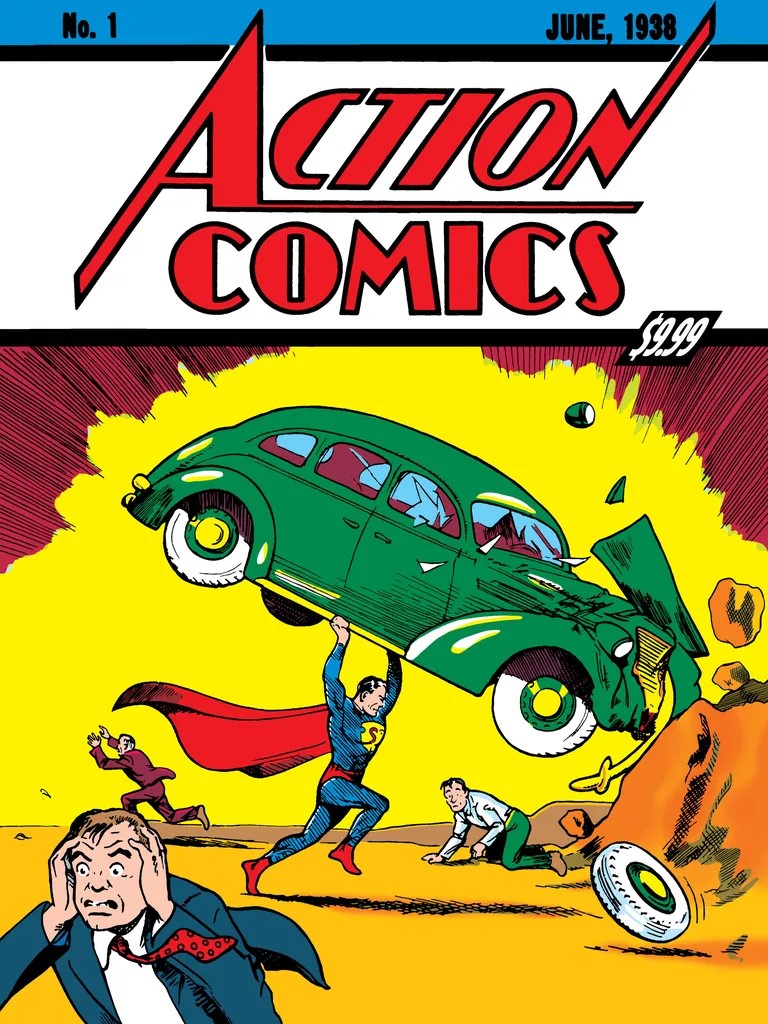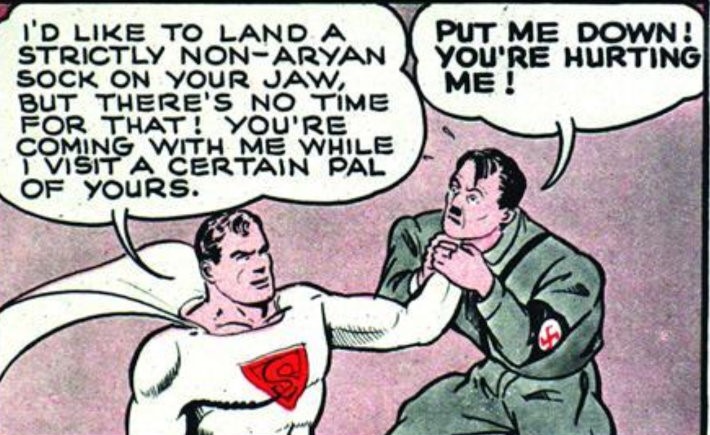09 April 2025
|
Libby Parfitt remembers the early days of the DC comic book franchise.
2025 marks the 90th anniversary of comic book behemoth, DC Comics. Nowadays DC is renowned for its stable of superheroes, yet its beginnings were closer to home.
Who Founded DC Comics and How Did It Begin?
The first of many entities that would merge, occasionally fall by the wayside, or change names to become the DC Comics we know today, was started in 1935 by Malcolm Wheeler-Nicholson.
An American World War I soldier who rapidly rose to the rank of Major, Wheeler-Nicholson quit the Army after writing an open letter to the US President castigating the military’s leadership; he later survived what his family believed was, despite their best attempts to deny it, an Army-sanctioned revengeful assassination attempt.
In need of a living and drawn to writing, Wheeler-Nicholson started creating military non-fiction, but soon moved into adventure stories for cheap and hugely popular pulp magazines.
Suggested article: Comic Book Price Guide - part 1
What Was the First DC Comic Ever Published?
By 1935 Wheeler-Nicholson had a new idea. Humorous comic strips, or ‘funnies’ as they were known, were a staple of many newspapers and had started to be collated and re-released in standalone anthologies.
Wheeler-Nicholson wanted in on this new type of publishing, but there was a problem: every popular comic strip’s rights were already locked down. Undeterred, the Major put out a call for innovative original ideas: the result was February 1935’s New Fun: The Big Comic Magazine #1, a larger tabloid-sized publication that, for the first time ever, featured all original comic strips.

Although a desirable collectible, it’s remarkably hard to track down, with only a handful of sales recorded; the most recent, in 2024, saw a copy attract just over £3,000 at auction, yet this was for a poor example graded only 0.5, heavily restored by an amateur, meaning a book in better condition would likely be dramatically more valuable.
When Did DC Comics Create the First Superhero?
Having initially focused on strips involving tales of the West, adventure and, of course, ‘funnies’, in 1938 DC pioneered a new character archetype: the superhero. Kickstarting what would become the Golden Age of Comic Books, creations who would enjoy huge popularity for decades came thick and fast.
The first was Krypton’s son, Superman, who hit newsstands on the cover of Action Comics #1, which would become the most valuable comic book ever when an 8.0-graded copy sold at auction in 2024 for an astounding £4.62 million.
Superman was the first DC character to be given his own comic book in June 1939, an honour that was virtually unheard of, and such was his importance that from 1940 onwards the company branded itself ‘Superman-DC’.
When Did Batman and Wonder Woman Join DC Comics?
The Caped Crusader wasn’t far behind, with Batman arriving in 1939’s Detective Comics #27, which also debuted his iconic caped suit, Batmobile and the company name that would eventually be shortened to DC.
This is another book that now commands a price only Bruce Wayne could afford: a fine copy graded 6.5 went for £1.4 million last year. It wasn’t just the boys getting in on the action though, as Wonder Woman received her first cover appearance in January 1942’s Sensation Comics #1, with a near perfect 9.6 edition going for just over £300,000 in 2024.
How Did World War II Influence DC Comics?
World War II brought a watershed moment for comic books. Many of DC’s writers and artists were Jewish, and Americans were clamouring for patriotic heroes who could stand up to the Axis powers.
Did Superman Really Fight Hitler and Stalin in a Comic?
Only too happy to oblige, Superman creators Jerry Siegel and Joe Shuster, both children of Jewish immigrants, supplied a two-page strip for the February 27, 1940 issue of Look magazine, arrestingly titled How Superman Would End The War.
Published almost two years before the Pearl Harbor attack forced the USA into joining the Allies, memorable images include Superman single-handedly marching through the Nazi front line, twisting cannon barrels and punching Luftwaffe planes out of the sky.
After destroying the German defences, Superman hoists Hitler by his collar and informs him that he’d really like to “land a strictly non-Aryan sock on your jaw, but there’s no time for that” as Hitler whines for him to “Put me down! You’re hurting me!”.

After a pitstop in Moscow to (literally) grab Stalin, our hero abruptly dumps them in front of the Council of the League of Nations, who waste no time in finding them guilty of “modern history’s greatest crime – unprovoked aggression against defenceless countries”.
The strip caused an uproar in the Nazi party: the weekly SS newspaper, The Black Corps, went so far as to publish a full page lambasting the comic and its creators (an extremely effective and entirely self-defeating way to ensure that everyone who hasn’t already read the magazine immediately seeks it out).
The insights and insults were crushing, like, er, they think Superman’s outfit looks a bit like a swimming costume? Their criticism is almost entirely based on Superman’s attire, actually, as it’s also pointed out that, for reasons never clarified, the Nazis consider it somehow highly impractical for storming a bunker.
There can be little doubt that “the intellectually and physically circumcised” Siegel and Shuster, as the SS dub them, would have been gutted to be on the receiving end of such devastating repartee.
If you’d like to own this iconic piece of Nazi-baiting history, you can find a decent condition copy on eBay for a surprisingly affordable £115. It’s a storyline that Army man, Wheeler-Nicholson, probably adored, but unfortunately his battlefield expertise didn’t translate into financial prowess and recurrent cash-flow crises had already forced him out of the company.
Why Did Superhero Comics Decline After the 1940s?
But the overwhelming popularity of superheroes didn’t endure. By the late ‘40s, likely sick of war, the public were turning to other types of stories, like science fiction, Westerns and romance, and DC followed suit. By the mid ‘50s the Golden Age was done, but DC’s story was far from over, as we’ll explore in Part 2 next month.
What Is Comic Book Grading and Why Does It Matter?
Comic books are graded pre-auction along a 10-point scale according to signs of damage or wear, like reading creases, spine breakage, tears or missing pages. A grading difference of just 0.5 can mean a loss (or gain!) of hundreds of thousands of pounds. Especially valuable editions are often ‘slabbed’ after grading, meaning that they are encased in an un-openable rigid plastic shell.
PR (poor) 0.5: severely damaged, with pages missing or completely split spine
FR (fair) 1.0-1.5: major damage and low eye appeal
GD (good) 1.8-3.0: multiple defects, but still complete and readable
VG (very good) 3.5-5.0: significant wear but still desirable
FN (fine) 5.5-7.0: shows some wear but above average
VF (very fine) 7.5-9.0: some minor defects, but in overall excellent condition
NM (near mint) 9.2-9.8: nearly perfect and looks brand new
M (mint) 9.9-10.0: a perfect collectible with no defects whatsoever
If you enjoy comic book collecting, collectors can get the latest collecting news by signing up for the Collectors Club of Great Britain’s newsletter.







